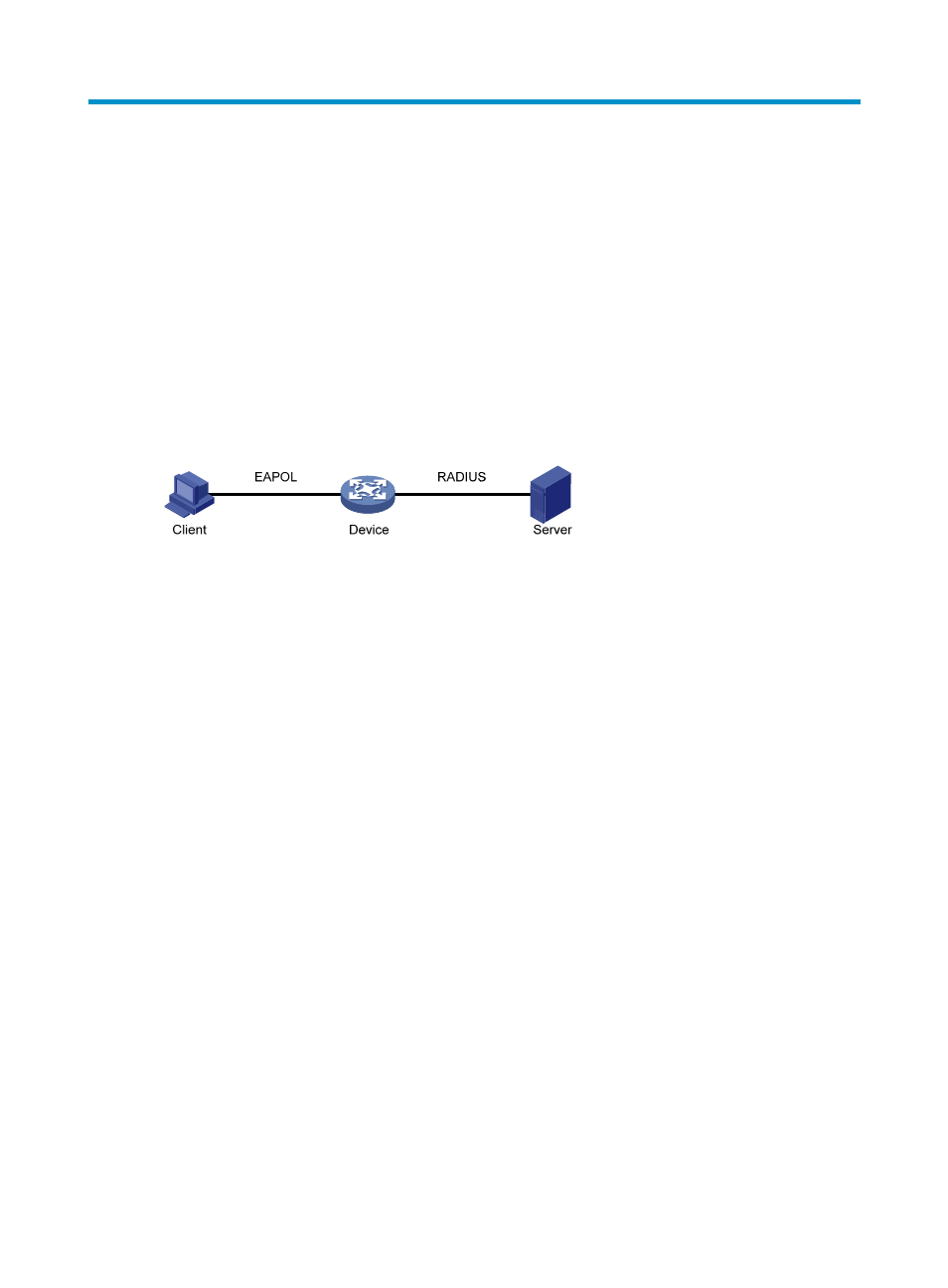1x overview, 1x architecture – H3C Technologies H3C WX3000E Series Wireless Switches User Manual
Page 118

104
802.1X overview
802.1X is a port-based network access control protocol initially proposed by the IEEE 802 LAN/WAN
committee for securing wireless LANs (WLANs), and it has also been widely used on Ethernet networks
for access control.
802.1X controls network access by authenticating the devices connected to 802.1X-enabled LAN ports.
802.1X architecture
802.1X operates in the client/server model. It comprises three entities: the client (the supplicant), the
network access device (the authenticator), and the authentication server, as shown in
Figure 52 Architecture of 802.1X
•
The client is a user terminal seeking access to the LAN. It must have 802.1X software to authenticate
to the network access device.
•
The network access device authenticates the client to control access to the LAN. In a typical 802.1X
environment, the network access device uses an authentication server to perform authentication.
•
The authentication server is the entity that provides authentication services for the network access
device. It authenticates 802.1X clients by using the data sent from the network access device, and
returns the authentication results for the network access device to make access decisions. The
authentication server is typically a Remote Authentication Dial-in User Service (RADIUS) server. In a
small LAN, you can also use the network access device as the authentication server.
Controlled/uncontrolled port and port
authorization status
802.1X defines two logical ports for the network access port: controlled port and uncontrolled port. Any
packet arriving at the network access port is visible to both logical ports.
•
The controlled port allows incoming and outgoing traffic to pass through when it is in authorized
state, and denies incoming and outgoing traffic when it is in unauthorized state, as shown in
. The controlled port is set in authorized state if the client has passed authentication, and in
unauthorized state, if the client has failed authentication.
•
The uncontrolled port is always open to receive and transmit EAPOL frames.
- H3C WX5500E Series Access Controllers H3C WX3500E Series Access Controllers H3C WX2500E Series Access Controllers H3C WX6000 Series Access Controllers H3C WX5000 Series Access Controllers H3C LSWM1WCM10 Access Controller Module H3C LSUM3WCMD0 Access Controller Module H3C LSUM1WCME0 Access Controller Module H3C LSWM1WCM20 Access Controller Module H3C LSQM1WCMB0 Access Controller Module H3C LSRM1WCM2A1 Access Controller Module H3C LSBM1WCM2A0 Access Controller Module H3C WA3600 Series Access Points H3C WA2600 Series WLAN Access Points H3C S10500 Series Switches H3C S5800 Series Switches H3C S5820X Series Switches H3C S12500 Series Switches H3C S9500E Series Switches H3C MSR 5600 H3C MSR 50 H3C MSR 3600 H3C MSR 30 H3C MSR 2600 H3C MSR 20-2X[40] H3C MSR 20-1X H3C MSR 930 H3C MSR 900 H3C SR8800 H3C SR6600-X H3C SR6600 H3C SecPath F5020 H3C SecPath F5040 H3C VMSG VFW1000
